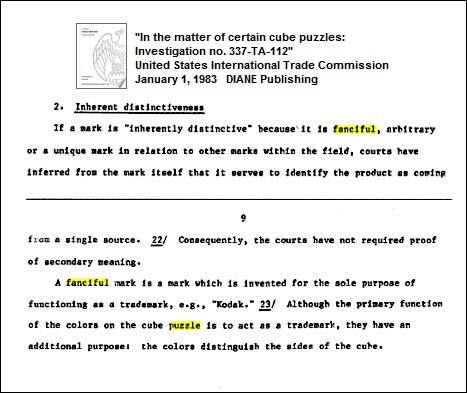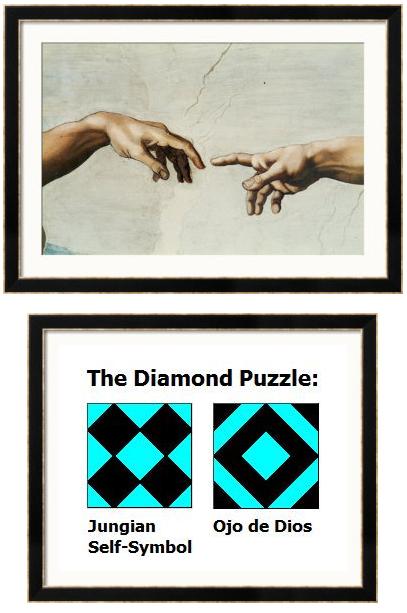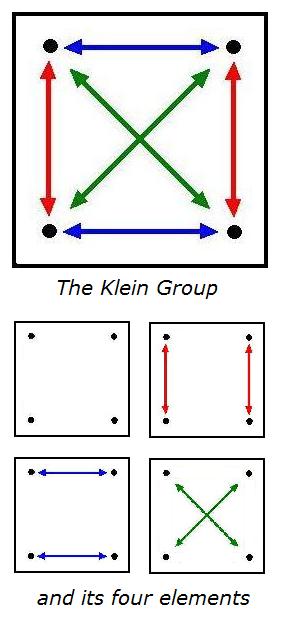I prefer The Pride of Lowell —
Some literary background— Doctor Sax.
See also this journal on Feb. 15, 2017 —
Related item from Arts & Letters Daily today —
Plato at Stanford:
Lacan and the Matheme of Fantasy
“… [in] the matheme of fantasy ($ ◊ a ),
the diamond-shaped “lozenge” (poinçon ) ◊
can be read as a condensation of four symbols:
one, ∧ (the logical symbol for conjunction [“and”]);
two, ∨ (the logical symbol for disjunction [“or”]);
three, > (the mathematical symbol for “greater than”); and,
four, < (the mathematical symbol for “less than”). As per
Lacan’s matheme, the subject’s desires are scripted and
orchestrated by an unconscious fundamental fantasy
in which the desiring subject ($) is positioned in relation to
its corresponding object-cause of desire ( a ).”
— plato.stanford.edu, Stanford Encyclopedia of Philosophy

The Stanford author:
The author is a professor in Albuquerque.
For other perspectives, see that city in this journal.
For the film authors, see IMDb.
See Shadowlands in this journal.
The film so titled was directed by Richard Attenborough,
President of the Royal Academy of Dramatic Art,
who reportedly died on Sunday, August 24, 2014.
“It’s all in Plato, all in Plato:
bless me, what do they
teach them at these schools!”
— C. S. Lewis
… With a trip to yesteryear suggested by
the Feb. 28 New York Times article
"Casting Shadows on a Fanciful World"
("Wes Anderson Evokes Nostalgia in
'The Grand Budapest Hotel' ").
"Again, Oscars for best director and best picture . . . ."
See also the previous post and a search for
"Plato thanks the Academy."
From "Plato Thanks the Academy," March 19, 2014 —
“Click on fanciful .”
A possible result —

See also "Triple Cross."
Wednesday, March 13, 2013
|
"I pondered deeply, then, over the
adventures of the jungle. And after
some work with a colored pencil
I succeeded in making my first drawing.
My Drawing Number One.
It looked something like this:
I showed my masterpiece to the
grown-ups, and asked them whether
the drawing frightened them.
But they answered: 'Why should
anyone be frightened by a hat?'"
* For the title, see Plato Thanks the Academy (Jan. 3).
In memory of Joan Rivers
This post was suggested by the previous post‘s quote
“the subject’s desires are scripted and orchestrated
by an unconscious fundamental fantasy,”
and by one of my favorite musical fantasies:
Melanie – Brand New Key (’71) .
Academics may prefer the following —
In which Plato continues to thank the Academy.
From the Academy, a lead balloon for 9/11 —
continued from March First, 2002.
A search today for the name Eisenman
(see previous post) yields the following :
"We need a cameo from Plato, a safecracker,
a wrinkle or two to be ironed out, some ice,
some diamonds, and, above all, laughter
for this irony of ironies."
— Jeffrey Kipnis, "Twisting the Separatrix,"
Assemblage No. 14, April 1991, MIT Press
"Imbedding the God character in a holy book's very detailed narrative
and building an entire culture around this narrative
seems by itself to confer a kind of existence on Him."
— John Allen Paulos in the philosophy column "The Stone,"
New York Times online, Oct. 24, 2010
A related post from Log24 later that year—
Sunday, November 28, 2010
|
"Next come the crown of thorns and Jesus' agonized crawl across the stage,
bearing the weight of his own crucifix. And at last, after making
yet another entrance, Mr. Nolan strikes the pose immortalized
in centuries of art, clad in a demure loincloth, arms held out to his sides,
one leg artfully bent in front of the other, head hanging down
in tortured exhaustion. Gently spotlighted, he rises from the stage
as if by magic, while a giant cross, pulsing with hot gold lights,
descends from above to meet him. Mr. Lloyd Webber's churning guitar rock
hits a climactic note, and the audience erupts in excited applause."
— Charles Isherwood, review of "Jesus Christ Superstar" in today's New York Times
Other remarks on embedding —
Part I
Review of a new book on linguistics, embedding, and a South American tribe—
"Imagine a linguist from Mars lands on Earth to survey the planet's languages…."
— Chronicle of Higher Education , March 20, 2012
Part II
The Embedding , by Ian Watson (Review of a 1973 novel from Shakespeare's birthday, 2006)
The New York Times Magazine this morning on a seminar on film theory at Columbia University—
"When the seminar reconvened after the break, Schamus said, 'Let’s dive into the Meno,' a dialogue in which Plato and Socrates consider virtue. 'The heart of it is the mathematical proof.' He rose from his seat and went to the whiteboard, where he drew figures and scribbled numbers as he worked through the geometry. 'You can only get the proof visually,' he concluded, stepping back and gazing at it. Plato may be skeptical about the category of the visual, he said, but 'you are confronted with a visual proof that gets you back to the idea embedded in visuality.'"
The Meno Embedding

See also Plato's Code and
Plato Thanks the Academy.

Steven Miessner, keeper
of the Academy’s Oscars,
died of a heart attack at 48
on Wednesday, July 29, 2009:
Click the above to enlarge.

Steve Miessner, the keeper of the Oscars,
packages the statues for transport
to Kodak Theatre in Los Angeles
in preparation for the 81st
Academy Awards ceremony held
on Sunday, Feb. 22, 2009
(Chris Carlson/AP).
From the date of
Miessner’s death:

Log24 on Thursday, July 30, 2009Annals of Aesthetics, continued: Academy Awards “First of all, I’d like “A poem cannot exhaust reality, — At War with the Word: |
— Quoted here July 29, 2009
(the day the keeper of
the Oscars died)
Possible clues:
From Google News at about
7 AM ET Mon., Aug. 3, 2009:
Henry Louis Gates Jr. mulls moving over death threatsBoston Herald – – 6 hours ago
CHILMARK – Black scholar Henry Louis Gates Jr. has received numerous death threats since he accused a white officer of …
Death threats may make Gates moveThe Daily Inquirer – 4 hours ago
Henry Louis Gates Jr. said yesterday that Harvard University suggested he move after receiving numerous death threats since he accused a white officer of …
Gates: I’ve received death threatsNECN – 9 hours ago
… Gates spoke at a book signing on Martha’s Vineyard. He also said that he has received death and bomb threats after the incident at his Cambridge home. …
Black scholar says he’s able to joke about arrestThe Associated Press – – 17 hours ago
Gates said he received numerous threats after the incident, including an e-mail that read, “You should die, you’re a racist.” Gates has changed his e-mail …
Gates grateful for island havenCape Cod Times – – 4 hours ago
As a result of death threats and bomb threats, he hasn’t returned to his Cambridge home, leased from Harvard University. The university has encouraged him …
Gates makes public appearance after race debateWorcester Telegram – – 20 hours ago
Gates, who spoke at a book signing on Martha’s Vineyard Sunday, says there also have been some serious moments. He says he received death and bomb threats …
|
Academy Awards
for Cambridge
“First of all, I’d like
to thank the Academy.”
— Remark attributed to Plato

“A poem cannot exhaust reality,
but it can arrest it.“
— At War with the Word:
Literary Theory and
Liberal Education,
by R. V. Young,
Chapter One
For one such poem, see
“Life and Death United:
An Intimate Portrait of
a Man Named Miles Davis,”
from a seminar’s weblog
at DePauw University on
Sunday, November 21, 2004.
See also the four Log24
entries on that date as well
as yesterday’s entry on Davis
and the entries preceding it.
“For every kind of vampire,
there is a kind of cross.”
— Thomas Pynchon in
Gravity’s Rainbow
“Since 1963, when Pynchon’s first novel, V., came out, the writer– widely considered America’s most important novelist since World War II– has become an almost mythical figure,
— Nancy Jo Sales in the November 11, 1996, issue of New York Magazine
(Click on images for their
source in past entries.)
In a Nutshell:
“Plato’s Ghost evokes Yeats’s lament that any claim to worldly perfection inevitably is proven wrong by the philosopher’s ghost….”
— Princeton University Press on Plato’s Ghost: The Modernist Transformation of Mathematics (by Jeremy Gray, September 2008)
|

The Square of Oppositon
at Stanford Encylopedia of Philosophy

The Square of Opposition
in its original form
"The diagram above is from a ninth century manuscript of Apuleius' commentary on Aristotle's Perihermaneias, probably one of the oldest surviving pictures of the square."
— Edward Buckner at The Logic Museum
From the webpage "Semiotics for Beginners: Paradigmatic Analysis," by Daniel Chandler:

The Semiotic Square
"The structuralist semiotician Algirdas Greimas introduced the semiotic square (which he adapted from the 'logical square' of scholastic philosophy) as a means of analysing paired concepts more fully (Greimas 1987,* xiv, 49). The semiotic square is intended to map the logical conjunctions and disjunctions relating key semantic features in a text. Fredric Jameson notes that 'the entire mechanism… is capable of generating at least ten conceivable positions out of a rudimentary binary opposition' (in Greimas 1987,* xiv). Whilst this suggests that the possibilities for signification in a semiotic system are richer than the either/or of binary logic, but that [sic] they are nevertheless subject to 'semiotic constraints' – 'deep structures' providing basic axes of signification."
* Greimas, Algirdas (1987): On Meaning: Selected Writings in Semiotic Theory (trans. Paul J Perron & Frank H Collins). London: Frances Pinter
Another version of the semiotic square:

Here is a more explicit figure representing the Klein group:

There is also the logical
diamond of opposition —

A semiotic (as opposed to logical)
diamond has been used to illustrate
remarks by Fredric Jameson,
a Marxist literary theorist:
|
"Introduction to Algirdas Greimas, Module on the Semiotic Square," by Dino Felluga at Purdue University–
The semiotic square has proven to be an influential concept not only in narrative theory but in the ideological criticism of Fredric Jameson, who uses the square as "a virtual map of conceptual closure, or better still, of the closure of ideology itself" ("Foreword"* xv). (For more on Jameson, see the [Purdue University] Jameson module on ideology.) Greimas' schema is useful since it illustrates the full complexity of any given semantic term (seme). Greimas points out that any given seme entails its opposite or "contrary." "Life" (s1) for example is understood in relation to its contrary, "death" (s2). Rather than rest at this simple binary opposition (S), however, Greimas points out that the opposition, "life" and "death," suggests what Greimas terms a contradictory pair (-S), i.e., "not-life" (-s1) and "not-death" (-s2). We would therefore be left with the following semiotic square (Fig. 1): 
As Jameson explains in the Foreword to Greimas' On Meaning, "-s1 and -s2"—which in this example are taken up by "not-death" and "not-life"—"are the simple negatives of the two dominant terms, but include far more than either: thus 'nonwhite' includes more than 'black,' 'nonmale' more than 'female'" (xiv); in our example, not-life would include more than merely death and not-death more than life.
* Jameson, Fredric. "Foreword." On Meaning: Selected Writings in Semiotic Theory. By Algirdas Greimas. Trans. Paul J. Perron and Frank H. Collins. Minneapolis: U of Minnesota P, 1976.
|
— The Gameplayers of Zan, by M.A. Foster
"For every kind of vampire,
there is a kind of cross."
— Thomas Pynchon,
Gravity's Rainbow
Crosses used by semioticians
to baffle their opponents
are illustrated above.
Some other kinds of crosses,
and another kind of opponent:
|
Monday, July 11, 2005
Logos
for St. Benedict's Day Click on either of the logos below for religious meditations– on the left, a Jewish meditation from the Conference of Catholic Bishops; on the right, an Aryan meditation from Stormfront.org. Both logos represent different embodiments of the "story theory" of truth, as opposed to the "diamond theory" of truth. Both logos claim, in their own ways, to represent the eternal Logos of the Christian religion. I personally prefer the "diamond theory" of truth, represented by the logo below.
See also the previous entry Sunday, July 10, 2005
Mathematics
and Narrative Click on the title for a narrative about
Nikolaos K. Artemiadis,

"First of all, I'd like to
— Remark attributed to Plato
|
||||||||
— Princeton University Press on Plato’s Ghost: The Modernist Transformation of Mathematics (by Jeremy Gray, September 2008)
“She’s a brick house…”
— Plato’s Ghost according to
Log24, April 2007
“First of all, I’d like
to thank the Academy.”
— Remark attributed to Plato

(Cf. the “I tell you a mystery”
link of March 11 in
“Politics, Religion, Scarlett.”)
Nikolaos K. Artemiadis,
(Co-) author of
| From Artemiadis’s website: | |
| 1986: | Elected Regular Member of the Academy of Athens |
| 1999: | Vice President of the Academy of Athens |
| 2000: | President of the Academy of Athens |

“First of all, I’d like to
thank the Academy…”
Orwell’s question, according to
an admirer of leftist Noam Chomsky:
“When so much of the BS is right out in the open,
why is it that we know so little about it?
Why don’t we see what’s right in front of our eyes?”
 Oscar |
Lying, Truth-Telling, and the Social Order |
 Michael Moore |
“First of all, I’d like to thank the Academy….”
— Quotation attributed to Plato
The New Yorker of March 31, 2003, discusses leftist academic Noam Chomsky. The online edition provides a web page listing pro-Chomsky links.
Chomsky’s influence is based in part on the popularity of his half-baked theories on linguistics, starting in the 1950’s with “deep structure” and “transformational,” or “generative,” grammar.
Chomsky has abandoned many of his previous ideas and currently touts what he calls The Minimalist Program.
For some background on Chomsky’s recent linguistic notions, see the expository essay “Syntactic Theory,” by Elly van Gelderen of the Arizona State University English Department. Van Gelderen lists her leftist political agenda on her “Other Interests” page. Her department may serve as an example of how leftists have converted many English departments in American universities to propaganda factories.
Some attacks on Chomsky’s scholarship:
Forty-four Reasons Why the Chomskians Are Mistaken
Chomsky’s (Mis)Understanding of Human Thinking
Anatomy of a Revolution… Chomsky in 1962
…Linguistic Theory: The Rationality of Noam Chomsky
Some attacks on Chomsky’s propaganda:
Destructive Generation excerpt
Partners in Hate: Noam Chomsky and the Holocaust Deniers
Chomsky and Plato’s Diamond

Like another purveyor of leftist nonsense, Jacques Derrida, Chomsky is fond of citing Plato as a precedent. In particular, what Chomsky calls “Plato’s problem” is discussed in Plato’s Meno. For a look at the diamond figure that plays a central role in that dialogue, see Diamond Theory. For an excellent overview of related material in Plato, see Theory of Forms.
Powered by WordPress